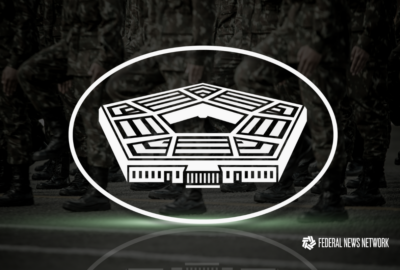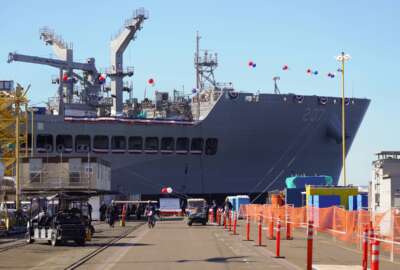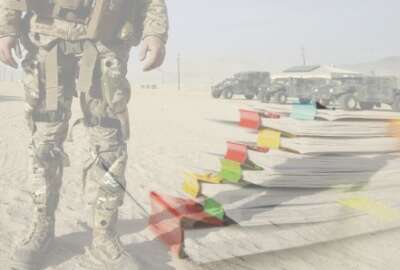In ‘paradigm shift,’ DoD looks to move more equipment maintenance overseas
Experimentation will start this year in Indo-Pacific Command, part of a broader effort to move weapons system support closer to where it's likely to be needed.
If the U.S. military winds up in a war that does damage to its equipment, in many cases, the repairs would have to be done stateside. Not only would that require long round trips, but many of the shipyards and depots that would be tasked with that work are overtaxed even in peacetime. That’s one reason DoD wants to move more of its maintenance operations overseas as part of what officials are calling the Regional Sustainment Framework.
It’s still very early days for the RSF, first published in May, and Defense officials have not yet estimated the full costs of what they say will be a “paradigm shift” in the way the military handles overseas logistics. But the key, according to Christopher Lowman, the assistant secretary of Defense for sustainment, is that the U.S. won’t do it alone.
Rather, he said, DoD wants to build an international maintenance “ecosystem” made up of trusted allies and U.S. and foreign vendors.
“This is just another mechanism for us to satisfy demand driven by normal use and wear and tear on the equipment, or, as we scale from competition through crisis and conflict, where we have battle damaged equipment,” he told reporters this week. “The intent here is to create those maintenance, repair, and overhaul capabilities and utilize them in competition, so that they’re also available to us to repair battle damaged equipment in conflict.”
Pilots to begin this year in Pacific
Although DoD has published very few details so far on how the new framework will operate, a provision in this year’s defense authorization bill will let the department get started with some initial experimentation. That law ordered the department to test and demonstrate “product support” capabilities in contested logistics environments, partnering with one or several other of the so-called “five eye” countries: Canada, the U.K, Australia and New Zealand.
Lowman said the initial work will start this year in Indo-Pacific Command, with follow-on experiments planned in Europe next year.
“INDOPACOM is the priority theater where our pacing threat resides, but it’s also the greatest contested logistics challenge, because of the long over-ocean lines of communication. So it really provides the most rationale to get sustainment capability into the theater in a distributed fashion and to regenerate readiness,” he said. “And there are capabilities that are emerging in [U.S. European Command] because of support to Ukraine and the amount of Western produced material that’s flowing in … We’re letting the combatant commander in EUCOM, the service component commanders and the NATO partnership shape those regional capabilities, their focus and their investment.”
Sustainment options for commanders
Conducting maintenance at forward locations certainly isn’t an entirely new idea. For example, the Navy has historically done scheduled maintenance on its overseas stationed ships in Japan, Spain and Bahrain. But a recent Government Accountability Office study found that out of 71 ships scheduled for those overseas maintenance periods, 50 took longer than planned.
However, Lowman said the idea behind RSF is to have many more options for commanders, including ones from allied nations.
“In the past, sustainment has historically been viewed as a national responsibility. National governments would sustain our forces in whatever theater we were operating in. This is really a recognition that sustainment can be performed through a coalition and a network of regional providers,” he said. “Each of those regional allies has industrial capability, maintenance, repair and overhaul capability, and a desire to support the work. This capitalizes on those capabilities in theater so that we’re not building U.S.-owned and operated capabilities — we’re taking advantage of what exists, making the appropriate changes to accommodate specific U.S. needs, and then utilizing that through a joint venture arrangement.”
One complication the department might face as it tries to change its maintenance paradigm is a longstanding federal law called the 50/50 rule. That provision requires each military service to conduct half of their depot-level maintenance at U.S. government-owned facilities, generally staffed by government employees – the so-called “organic industrial base.” Defense officials say they’ll have to keep close tabs on their maintenance workload distribution to make sure they continue to comply with that rule even as more work moves overseas.
A role for advanced manufacturing
And doing more work overseas is one thing. Getting spare parts to those new maintenance locations is another – especially in situations where they’re needed on very short notice.
So in parallel, Lowman said the department has efforts underway to make parts when and where they’re needed through advanced manufacturing techniques.
“It’s really an effort to take advantage of existing commercial technology, whether that’s additive manufacturing or subtractive manufacturing,” he said. “We’ve been after this, in coordination with the military services, for the last three years. But in [the Office of the Secretary of Defense], our intent is to enable the use of advanced manufacturing capability so that we don’t have to transport parts from the continental United States into the theater to repair equipment. What we’re doing is enabling that digital framework and network in order to transmit intellectual property to the point of manufacture, secure that intellectual property at the point of manufacture, and finally to ensure that the parts produced meet our standards so that they’re safe and suitable to operate.”
Copyright © 2024 Federal News Network. All rights reserved. This website is not intended for users located within the European Economic Area.
Jared Serbu is deputy editor of Federal News Network and reports on the Defense Department’s contracting, legislative, workforce and IT issues.
Follow @jserbuWFED






